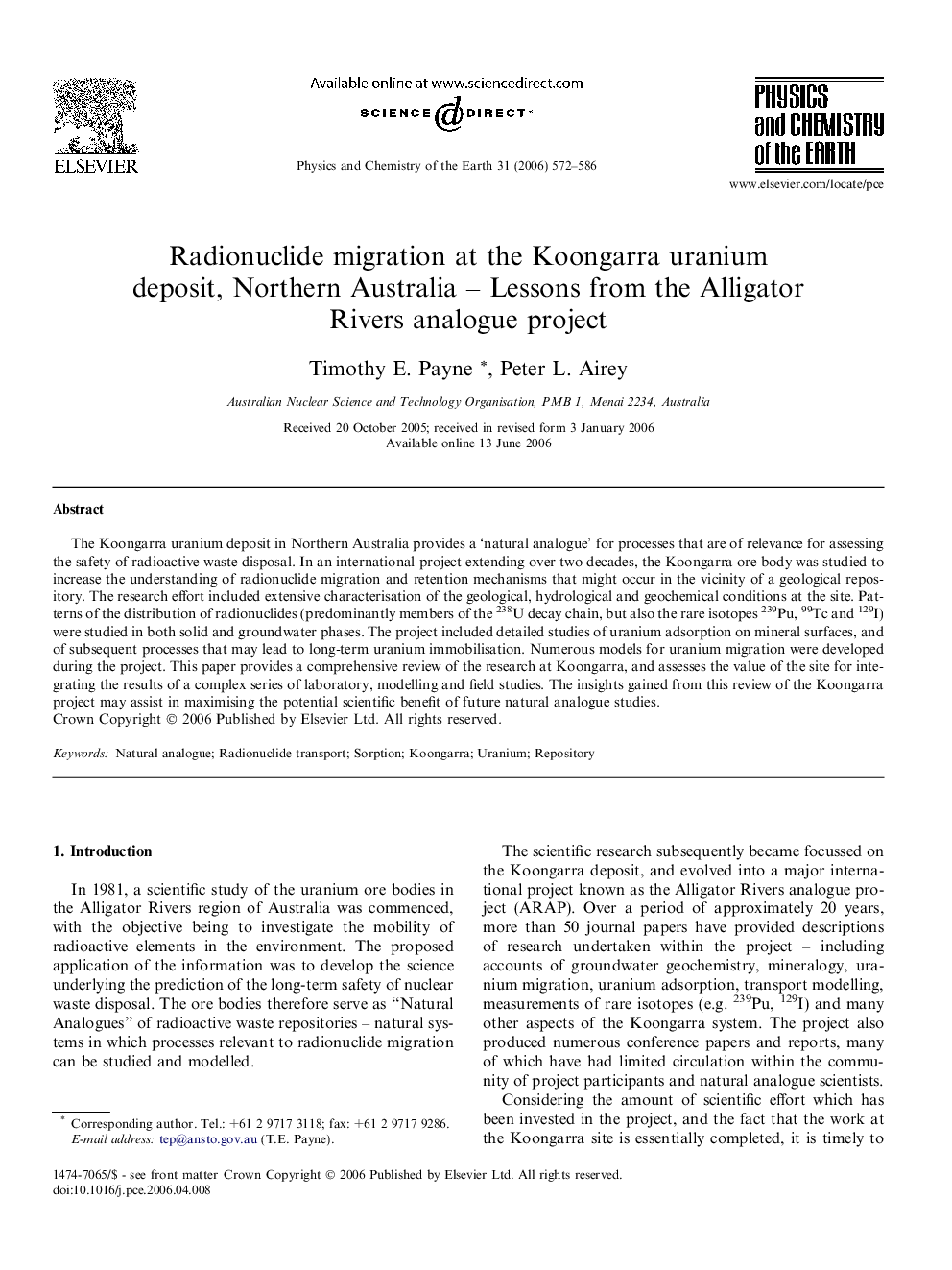| Article ID | Journal | Published Year | Pages | File Type |
|---|---|---|---|---|
| 4722088 | Physics and Chemistry of the Earth, Parts A/B/C | 2006 | 15 Pages |
The Koongarra uranium deposit in Northern Australia provides a ‘natural analogue’ for processes that are of relevance for assessing the safety of radioactive waste disposal. In an international project extending over two decades, the Koongarra ore body was studied to increase the understanding of radionuclide migration and retention mechanisms that might occur in the vicinity of a geological repository. The research effort included extensive characterisation of the geological, hydrological and geochemical conditions at the site. Patterns of the distribution of radionuclides (predominantly members of the 238U decay chain, but also the rare isotopes 239Pu, 99Tc and 129I) were studied in both solid and groundwater phases. The project included detailed studies of uranium adsorption on mineral surfaces, and of subsequent processes that may lead to long-term uranium immobilisation. Numerous models for uranium migration were developed during the project. This paper provides a comprehensive review of the research at Koongarra, and assesses the value of the site for integrating the results of a complex series of laboratory, modelling and field studies. The insights gained from this review of the Koongarra project may assist in maximising the potential scientific benefit of future natural analogue studies.
